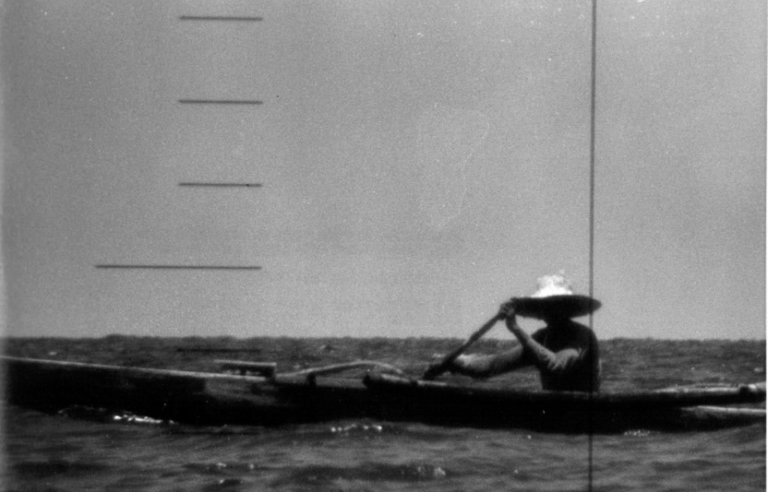do you mean Necho's expedition? That was done by the Phoenicians although probably didn't happen, at least the circumnavigating bitWoddy wrote: Wed May 15, 2024 9:58 am Not if you had boats. The Ancient Egyptians circumnavigated the whole of Africa, .
History thread
1951 - This is the first official mascot in New Zealand rugby - Mooloo, a cow, which became the mascot for the Waikato provincial team in 1951. The name "Mooloo" was given to an anonymous cow in a children's competition held by local radio station 1XH. The mascot's image was paraded before games, and its "bellow" was heard after every try scored by the home team. The team was nicknamed "the Mooloos", and Waikato fans rang cowbells at games.
I drink and I forget things.
Impressive crowds back in the 50sEnzedder wrote: Sat May 31, 2025 6:14 pm 1951 - This is the first official mascot in New Zealand rugby - Mooloo, a cow, which became the mascot for the Waikato provincial team in 1951. The name "Mooloo" was given to an anonymous cow in a children's competition held by local radio station 1XH. The mascot's image was paraded before games, and its "bellow" was heard after every try scored by the home team. The team was nicknamed "the Mooloos", and Waikato fans rang cowbells at games.
Mooloo.jpg
- Uncle fester
- Posts: 5049
- Joined: Mon Jun 29, 2020 9:42 pm
Not much else going on in rural NZ to quicken the pulse.Sandstorm wrote: Sun Jun 01, 2025 9:24 amImpressive crowds back in the 50sEnzedder wrote: Sat May 31, 2025 6:14 pm 1951 - This is the first official mascot in New Zealand rugby - Mooloo, a cow, which became the mascot for the Waikato provincial team in 1951. The name "Mooloo" was given to an anonymous cow in a children's competition held by local radio station 1XH. The mascot's image was paraded before games, and its "bellow" was heard after every try scored by the home team. The team was nicknamed "the Mooloos", and Waikato fans rang cowbells at games.
Mooloo.jpg
Yeah, it was the predominant English gene. We're breeding it out to smaller proportions thankfully.
My guess is the cow hide was burlap sacking.
That crowd was for the Springbok game back when Hamilton's population was under 25k
In 1951, Waikato, representing New Zealand, won a historic 14-10 victory over the Springboks (South Africa). This match was significant as it marked Waikato's first-ever victory against the Springboks. The event took place at Rugby Park in Hamilton, with a crowd of 30,000 cheering on the Mooloos (Waikato's nickname). Following the game, the South Africans traditionally presented Waikato with the head of a springbok antelope, according to NZ Histor
I drink and I forget things.
On that note - something I very recently discovered - Hamilton is named after a British general who died in the battle of Gate Pa in Tauranga, BOP. A Maori victory in the NZ wars. The RNZ documentaries are on YouTube and they are great.. My guess is the cow hide was burlap sacking.
That crowd was for the Springbok game back when Hamilton's population was under 25k.
The decent genes hopped off at Oz and didn’t stay until the bus reached the terminus. The Tasman is like a bouncer at a celeb nightclub that only lets in hot chicks.Enzedder wrote: Sun Jun 01, 2025 6:53 pmYeah, it was the predominant English gene. We're breeding it out to smaller proportions thankfully.
My guess is the cow hide was burlap sacking.
That crowd was for the Springbok game back when Hamilton's population was under 25k
In 1951, Waikato, representing New Zealand, won a historic 14-10 victory over the Springboks (South Africa). This match was significant as it marked Waikato's first-ever victory against the Springboks. The event took place at Rugby Park in Hamilton, with a crowd of 30,000 cheering on the Mooloos (Waikato's nickname). Following the game, the South Africans traditionally presented Waikato with the head of a springbok antelope, according to NZ Histor

Triton‘s most famous achievement was her participation in Operation Sandblast, which saw her shakedown cruise double as the first time a vessel circumnavigated the globe while submerged. Occurring between February 24 and April 25, 1960, the journey saw the submarine travel 26,723 nautical miles along the route taken by Ferdinand Magellan in the 1500s.
The Featured Image of this article shows fisherman Rufino Baning paddling through Magellan Bay, in the Philippines. Spotted by Triton, the 19-year-old was also the only witness to the submarine’s movements in the Pacific.
His identity was unknown at the time, but National Geographic, which had covered Triton‘s voyage, later found him on the island of Macton. When asked about the encounter, Baning revealed that he’d thought the submarine’s periscope was the “gleaming mysterious eye” of a sea monster.